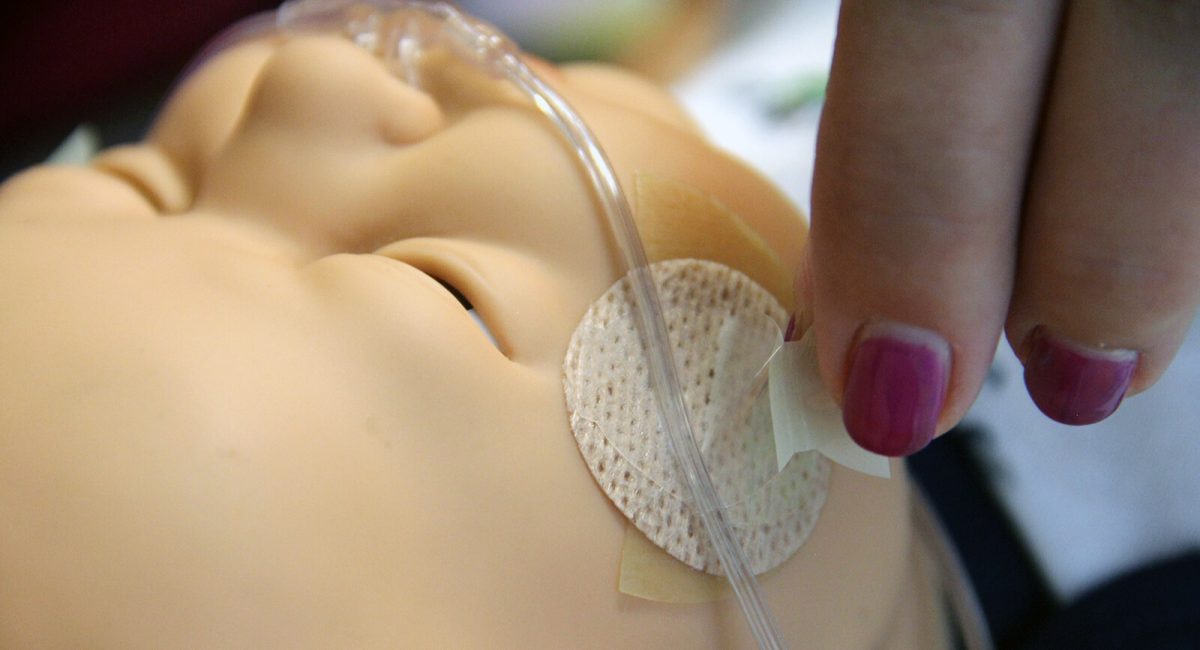Vapotherm Blog
CAUTION: US Federal law restricts this device to sale by or on the order of a physician. Indications, contraindications, warnings, and instructions for use can be found in the product labelling supplied with each device or at https://vapotherm.com/resources/support/precision-flow-reference/. For spontaneously breathing patients. High Velocity Therapy (HVT) does not provide total ventilatory requirements of the patient. It is not a ventilator. Decisions surrounding patient care depend on the physician’s professional judgment in consideration of all available information for the individual case, including escalation of care depending on patient condition.
Vapotherm provides high velocity nasal insufflation (HVNI) with simultaneous oxygen delivery to augment breathing of spontaneously breathing patients suffering from respiratory distress and/or hypoxemia in the hospital setting. It is not intended to provide total ventilatory requirements of the patient and not for use during field transport.
The information provided in this section is for educational purposes only. This information is not intended to support the safety or effectiveness of Vapotherm products, or diagnose, treat, cure, or prevent any disease. It is not a substitute for consultation with your healthcare provider and should not be construed as medical advice.

Large Clinical Trial Confirms Safety & Efficacy of HFNC for Treating Bronchiolitis
The results of the prospective, multi-center randomized controlled trial were published by Franklin and colleagues in March 2018 in New England Journal of Medicine titled A Randomized Trial of High-Flow Oxygen Therapy in Infants with Bronchiolitis. The trial found among infants with bronchiolitis, those treated with high flow nasal cannula (HFNC) had significantly lower rates of escalation of care due to treatment failure than those treated with standard Oxygen therapy.

Computational Fluid Dynamics Modeling Examines Differences in Design Elements of High Flow Nasal Cannula Systems
Several high flow nasal cannula (HFNC) systems are widely used in clinical practice, yet few studies have evaluated the differences in design elements or clinical effectiveness. In 2014, Tero and colleagues published “Risks Associated With Conventional Humidifiers Adapted for High-Flow Nasal Cannula Therapy in Human Infants: Results of a Time and Motion Study”, which demonstrated HFNC using the Fisher & Paykel MR850™.

Vapotherm Shows Noninferiority to NIPPV for Undifferentiated Respiratory Distress in the Emergency Department
The results of the prospective, multi-center randomized controlled trial were published by Doshi and colleagues in January 2018 in Annals of Emergency Medicine titled High-Velocity Nasal Insufflation in the Treatment of Respiratory Failure: A Randomized Clinical Trial. The trial found no difference between the therapies in intubation rates or treatment failure rates.

High Flow Nasal Cannula and Poor Outcomes? Response to Taha, et al (2016)
While the association between HFNC and BPD/mortality should raise concern, there are major limitations of this analysis. Please consider the following points when interpreting this study.

Vapotherm & The HIPSTER Trial: Review of Recent Clinical Literature
In September of 2016, the report of the HIPSTER trial came to press in the New England Journal of Medicine. The HIPSTER trial was a prospective, multicenter randomized controlled trial evaluating the outcomes for High Flow Nasal Cannula (HFNC) compared to nasal continuous positive airway pressure (nCPAP) when used as a primary means of respiratory support in neonates.

Study Compares Rainout Between Two Popular High Flow Nasal Cannula (HFNC) Devices
According to the Centers for Disease Control, the total national healthcare expenditure in 2015 was $3.2 trillion, and 32.3% of that is for hospital care. The cost of healthcare has been steadily increasing and is projected to continue to rise. In 2014 there were 137.8 million emergency department visits, a 14.8% increase since 2006.

High Flow Nasal Cannula as First-Line Therapy in the Emergency Department Setting: a Review of Findings in Six Medical Centers
Since Vapotherm introduced high flow nasal cannula (HFNC) in 2000, its applications and utility has increased to include hospital-wide settings and across all age groups. Additionally, there is some evidence that HFNC may help reduce the cost of patient care by limiting ICU admissions.

How to Manage the NiPPV Intolerant Patient
The emergency department (ED) can often be a chaotic and high intensity environment. As an ED clinician, it is helpful and important to quickly troubleshoot any problems that may arise during the care of a patient. Noninvasive Positive Pressure Ventilation (NiPPV) is a commonly utilized tool during the treatment of various cardiac and pulmonary conditions seen in the ED.

The Role of the Emergency Department Clinician: Preventing Noninvasive Ventilation Intolerance
A call comes in from EMS for a patient being brought to the hospital with the signs and symptoms of respiratory distress, including shortness of breath and chest discomfort. As an emergency department (ED) clinician you begin to quickly take inventory of the different diagnoses for the chief complaint of dyspnea.

How to: Vapotherm Neonatal Cannula Affixation
With the patient in supine position, make sure his/her face is clean.
Use DuoDERM CGF Extra Thin Dressings (1-3/4″ x 1-1/2″).
Peel off the backing of each duoDERM Spot and place them halfway between the patient’s ear and corner of their lip.